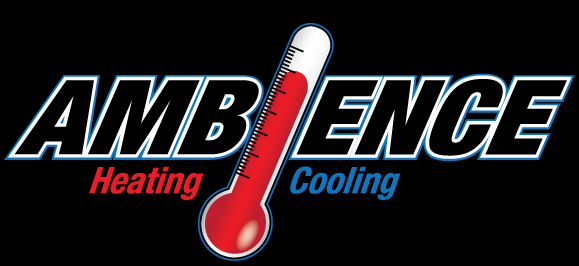
Ceiling fans are one of the most overlooked ways to increase home comfort and cut energy costs. By boosting air circulation and supporting your HVAC system, ceiling fans and energy efficiency are truly a natural pairing. They offer a practical, energy-efficient way to maintain your comfort in hot weather while lessening strain on your AC—helping you avoid unnecessary air conditioning repair.
In this blog, the experts at Ambience HVAC, Inc. break down how ceiling fans can improve your comfort while avoiding energy waste with increased HVAC efficiency. We'll also offer some HVAC efficiency tips that put to good use ceiling fans.
Comfort vs. Temperature: The Effect of the Wind-Chill Effect Indoors
Ceiling fans don’t actually cool the air—they cool you down by increasing air movement across your skin. This is referred to as the wind-chill effect, and it can make a room feel up to 4 degrees cooler without touching the thermostat. That means you feel less hot and enjoy the benefits of indoor air circulation from your ceiling fan while using less AC—helping reduce your electric bill in summer.
The Best of Both: Benefits of Using Fans and Air Conditioning Together
There are several advantages to using ceiling fans and air conditioning in tandem, especially during the warmer months. By using both, you increase HVAC efficiency and enjoy a cooler living space with less work from your cooling system.
Top perks of using ceiling fans and AC together:
- Ceiling fans help lower HVAC load by circulating cool air more evenly throughout rooms in your home. Decreasing HVAC stress is important, because it can prevent a breakdown that could result in premature AC or furnace installation.
- Using overhead fans boosts the comfort level of your home by reducing uneven temperatures and improving air movement.
- Running both ceiling fans and AC can lower your utility usage. If you have a home automation system, you can even adjust your smart thermostat settings to set the temperature higher while your ceiling fan is running.
Clockwise vs. Counterclockwise Ceiling Fan Rotation: Which is the Correct Direction?
To get the most out of your ceiling fans year-round, it’s important to set the blades to rotate in the proper direction for the season. The direction affects how air circulates, which can either or redistribute heat so you feel warmer.
When to spin ceiling fans counterclockwise
In the summer, ceiling fans should rotate counterclockwise at a quick speed. This creates a breeze that moves air toward the floor, enhancing the wind-chill effect and causing you to feel cooler.
When it's best to spin ceiling fans clockwise
On cold days, set your fan to turn clockwise on a gentle setting. This softly moves cold air up and pushes warm air near the ceiling down toward you, so you feel warmer without touching your thermostat.
How to Pick Out the Best Ceiling Fan for My Home
Picking the right ceiling fan depends on a few important details, including blade design, airflow rating and room dimensions. First, look for fans that have a good combination of ECFM airflow and blade pitch to deliver efficient air movement in your space:
- ECFM is the amount of air a fan pushes—the cubic feet per minute, or CFM—per watt of electricity used. Fans with higher ECFM are more energy efficient.
- Blade pitch refers to the tilt of the blades. A sharper blade pitch moves more air than a shallower pitch but can also put extra load on the motor.
Also, consider room size when sizing a ceiling fan—a fan that’s too small won’t move enough air, while one that’s too big may be disruptive in a smaller room.
Boost Your HVAC Efficiency With the Experts from Ambience HVAC, Inc.
At Ambience HVAC, Inc., our HVAC specialists can help you stay comfortable while easing the burden on your heating and cooling systems. From efficient ceiling fan strategies and air conditioning installation to smart thermostats and furnace repair, we offer comprehensive solutions that match your needs. Set up your appointment by calling 302-239-HVAC (4822) today.
